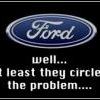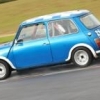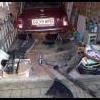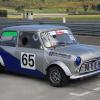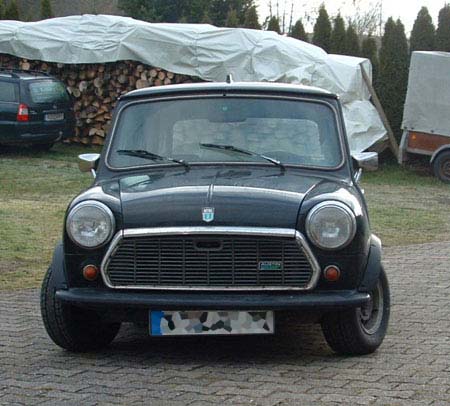
RPM redline/rev limit
#1

Posted 26 December 2004 - 06:28 PM
#2

Posted 26 December 2004 - 06:37 PM
#3

Posted 27 December 2004 - 03:54 PM
Seriously depends on your build standard 998 6k ish
The rally mini with a breathed on 1293 revs to 7k waste of time above 6 in top
The 998 will go to 7.5
#4

Posted 27 December 2004 - 11:47 PM
#5

Posted 18 April 2009 - 09:43 PM
I know with the SW5 cam it makes no sense. But sometimes I pull him in the high revs, only for the kick.
#6

Posted 18 April 2009 - 11:18 PM
#7

Posted 19 April 2009 - 12:38 AM
I'm rambling sorry.
#8

Posted 19 April 2009 - 01:47 AM
And then the issue of gearing makes the whole deal a bit more interesting. Who hasn't driven a car on the motorway with gearing that was so low that it caused the engine to run at higher RPM than was comfortable for passengers? The noise and vibrations at high RPMs can make for a really uncomfortable driving experience. On the other hand, low gearing is a substitute for torque, and thusly horsepower, so that a less powerful engine running on B-road gearing with a close ratio box and low final drive(diff) setup might embarrass a more powerful car which has motorway gearing with large RPM drops when shifting and a high final drive ratio meant more for quiet cruising than red mist B-road flying on the ground. Horses for courses, as they say.
As mentioned previously, the valve springs may impose a redline because the valves will bounce and not allow the engine to rev beyond a certain RPM. Since bouncing valves can also contact pistons, it's not wise to force an engine to reach the RPM where valve bounce causes misfiring and uneven running.
Bottom line: an engine will let you know just how fast it is comfortable running and you would do well to avoid revving over that RPM. Exceeding the RPM at which an engine is comfortable will result in increased engine wear, or failure, and will do nothing to enhance the driving experience.
#9

Posted 19 April 2009 - 09:54 AM
#10

Posted 19 April 2009 - 10:48 AM
I'll add to the above that a standard 998 run at very much above 7000 rpm for any reasonable length of time is pretty much guaranteed to break a piston ring. It's not all about valves.
Don't tell that to any of the guys racing in Mini7 where their 998s often hit 9000 or more. Their engines aren't standard, but the rings are close enough to standard that the statement I made still applies.
Rings are some of the strongest parts on engines. Assuming an engine was machined and assembled correctly, rings usually only break due to piston trauma caused by detonation, pre-ignition and other abnormal engine conditions. Even absolutely standard rings should have no trouble revving over 7000 without ring breakage. I'm sure that road engines often are revved past 7000 without ring failure. Ring failure can sometimes go undetected, but it should show up eventually if leakdown tests are performed or oil consumption increases.
Edited by mini7boy, 19 April 2009 - 10:57 AM.
#11

Posted 19 April 2009 - 10:51 AM
a standard 998
Rings are strong but by no means infallible. I speak from experience in this respect, rings on 998s do break when pushed beyond the design red line. I've done it and several of our members have complained of similar problems in similar circumstances. A broken ring rarely goes un-noticed, unless you never look in your mirrors to see the huge column of white smoke I suppose.
Edited by Dan, 19 April 2009 - 11:08 AM.
#12

Posted 19 April 2009 - 10:58 AM
#13

Posted 19 April 2009 - 02:06 PM
nick
#14

Posted 19 April 2009 - 05:41 PM
i answered that first post in 2004
#15

Posted 19 April 2009 - 06:09 PM
1 user(s) are reading this topic
0 members, 1 guests, 0 anonymous users




